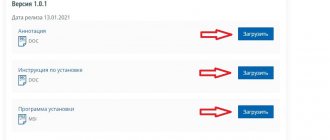A military mortgage is different from a regular one. First of all, those who pay for the purchase of an apartment. When applying for a classic housing loan, this is done by an ordinary citizen. And with a military mortgage - the Ministry of Defense. Simply put, while a person serves, the state pays for his housing. To avoid getting confused in all the nuances, use the step-by-step instructions.
What's the result?
A military mortgage is a profitable deal for those who are confident that they will devote their entire lives to the Russian army. Under this program, the state pays a loan for a military serviceman without cutting his salary. But you should understand that for an apartment an officer must pay 20 years of military service without the opportunity to resign and change his profession, and the amount of the mortgage depends on the age of the borrower - it may not be enough for good housing. The benefit is different in each situation, but in any case it is an opportunity to get an apartment at the expense of the state.
What conditions must a military man fulfill?
During military service, the loan is paid for by the state. But the program has an important nuance: Article 10. The emergence of the right to use savings accounted for in the participant’s personal savings account: the money used by the military personnel belongs to the country. When he takes out a mortgage, the apartment is under a double burden: from the state and from the bank. In order not to remain in debt, the military man must comply with the terms of the program:
- serve 20 years;
- serve 10 years and not terminate the contract early without good reason.
Then at the end of his service he becomes the legal owner of the apartment.
If you quit without a good reason, you will have to return all the money to the state - the down payment and mortgage payments - and repay the loan to the bank yourself.
An exception is dismissal after 10 years of service for a valid reason (reduction due to organizational and staffing measures, reaching the maximum age for service, being declared unfit or partially fit by a medical commission, transfer to a new duty station). It turns out that there are three scenarios for the development of events.
Military person served 20 years or more
In such a scenario, the officer owes nothing to the state. If during his service he took out a mortgage, the apartment becomes his property. But if the mortgage is not paid in full, after dismissal the military man makes contributions himself.
If the military man did not use a mortgage during his service, the money remains in his account. After dismissal, he can use them to buy an apartment.
The military man served 10 years or more (but less than 20) and resigned for good reason
In such a situation, the military man also does not need to return money from his personal account in the savings and mortgage system. He pays the rest of the mortgage himself.
If an officer did not participate in the military mortgage program, he can do so after dismissal.
The military man served less than 10 years or resigned without good reason without serving 20 years.
Under such conditions, the officer cannot use the money in the savings account and take out a mortgage, and if he did this during his service, all the money will have to be returned: both loan payments and the down payment.
Purchasing an apartment on the secondary market
/ 1
Residential premises purchased by a participant using the Central Housing Loan provided to pay the down payment and repay obligations under a mortgage loan are pledged (mortgage) by force of law with the lender and with the Russian Federation represented by the Institution from the date of state registration of the participant’s ownership of the specified residential premises .
Having received the Certificate, the NIS participant applies for a mortgage loan to a credit institution (hereinafter referred to as the lender). When contacting a lender you should:
1) find out the amount of the mortgage loan provided;
2) clarify the lender’s requirements for the purchased residential premises;
3) receive a list of documents required for consideration of an application for a mortgage loan;
The selection of residential premises is carried out based on the amount of savings recorded on the participant’s INS, credit funds and the amount of personal funds of the NIS participant (if available and necessary).
An NIS participant can choose residential premises independently or with the help of a realtor. If an NIS participant cannot be present at the place of purchase of residential premises, then he can represent his interests during the mortgage transaction (with the right to sign all necessary agreements, dispose of funds, submit an application for state registration of the purchase and sale agreement and ownership of the purchased residential premises) another person on the basis of a notarized power of attorney. However, you should find out whether the execution of documents by power of attorney is allowed in the selected credit institution (bank).
Requirements for the procedure for processing documents in different banks may differ.
The owner of the selected residential premises may insist on making an advance (deposit), which is undesirable, because The lender's refusal to provide a loan is not a basis for the owner of the residential premises to return the deposit received.
The seller of the residential premises must be promptly informed that the amount of funds provided under the CLP and mortgage loan agreements, as well as the participant’s personal funds (if any), can be transferred to his bank account only after state registration of the NIS participant’s ownership of the purchased residential property room.
Having selected residential premises, the NIS participant submits to the lender the necessary package of documents. If the lender makes a positive decision to issue a mortgage loan, the lender and the NIS participant enter into a loan agreement.
The NIS participant opens an account in his name with a credit institution, to which the funds of the Central Life Loan, credit funds and personal funds of the NIS participant (if any) will be transferred. The bank account agreement must contain terms on the procedure for the return of CZHZ funds to the Institution without the order of the participant in cases provided for by the Rules, including in the event of failure to carry out state registration of the NIS participant’s ownership rights to the purchased residential premises within 3 months from the date of receipt of the initial payment of the cost of housing to the bank NIS participant account.
To obtain a CLP, an NIS participant submits the following documents to the Institution:
1) a TsZhZ agreement signed by the NIS participant, drawn up in accordance with the standard form of the TsZhZ agreement, approved by Order of the Minister of Defense of the Russian Federation dated December 23, 2015 No. 820 (in 3 copies);
2) a copy of the mortgage loan agreement certified by the lender, drawn up taking into account the requirements of paragraph 30 of the Rules, approved by Decree of the Government of the Russian Federation of May 15, 2008 No. 370, with the attachment of the mortgage loan repayment schedule;
3) certified by the credit institution in which the participant has opened a bank account, a copy of the agreement on the participant’s bank account, opened for transactions with CZL funds and containing conditions on the procedure for returning CZZ funds to the Institution without the order of the client (participant) in cases provided for by the Rules;
4) a report on the assessment of the market value of the purchased residential premises, drawn up in accordance with the legislation of the Russian Federation in the field of valuation activities;
5) a copy of the passport of a citizen of the Russian Federation who is a member of the NIS.
The institution, within 10 working days, makes a decision on concluding a CLC agreement, signs it and, within 5 working days after signing, sends the signed CLC agreement (in 2 copies) to the participant or, if there are grounds for refusing to conclude a CLC agreement, posts this information on the official website of the Institution. If the participant (bank), within 20 working days from the date of posting the specified information on the official website of the Institution, does not eliminate the comments that were the basis for the refusal, the Institution makes a decision to refuse to conclude the CLP agreement and returns documents indicating the grounds for refusal.
After state registration of ownership of residential premises, the NIS participant submits the following documents to the Institution and the creditor:
1) a copy of the purchase and sale agreement for residential premises with registration inscriptions of the body carrying out state registration of rights to real estate and transactions with it, on state registration of mortgages by force of law;
2) an extract from the Unified State Register of Rights to Real Estate and Transactions with It for the acquired residential premises, containing restrictions (encumbrances) on the rights to residential premises in favor of the creditor and the Russian Federation represented by the Institution;
3) a copy of the document certified by the lender confirming the actual date of provision of the mortgage loan to the participant, the loan amount and the mortgage loan repayment schedule calculated taking into account the actual date of issuance of the loan.
The lender, after receiving the specified documents, transfers to the seller’s bank account the funds of the central housing estate, credit funds and (if available) the own funds of the NIS participant to pay for the residential premises in accordance with the contract for the sale and purchase of residential premises.
The institution, after receiving and reviewing the specified documents, provides the participant with the CLP by transferring the savings accounted for in the participant’s personal savings account to his bank account to repay the obligations on the mortgage loan in accordance with its repayment schedule. In this case, payments according to the schedule cannot be more than once a month, and the monthly payment is equal to 1/12 of the savings contribution for one NIS participant, approved by the Federal Law on the Federal Budget for the corresponding year.











